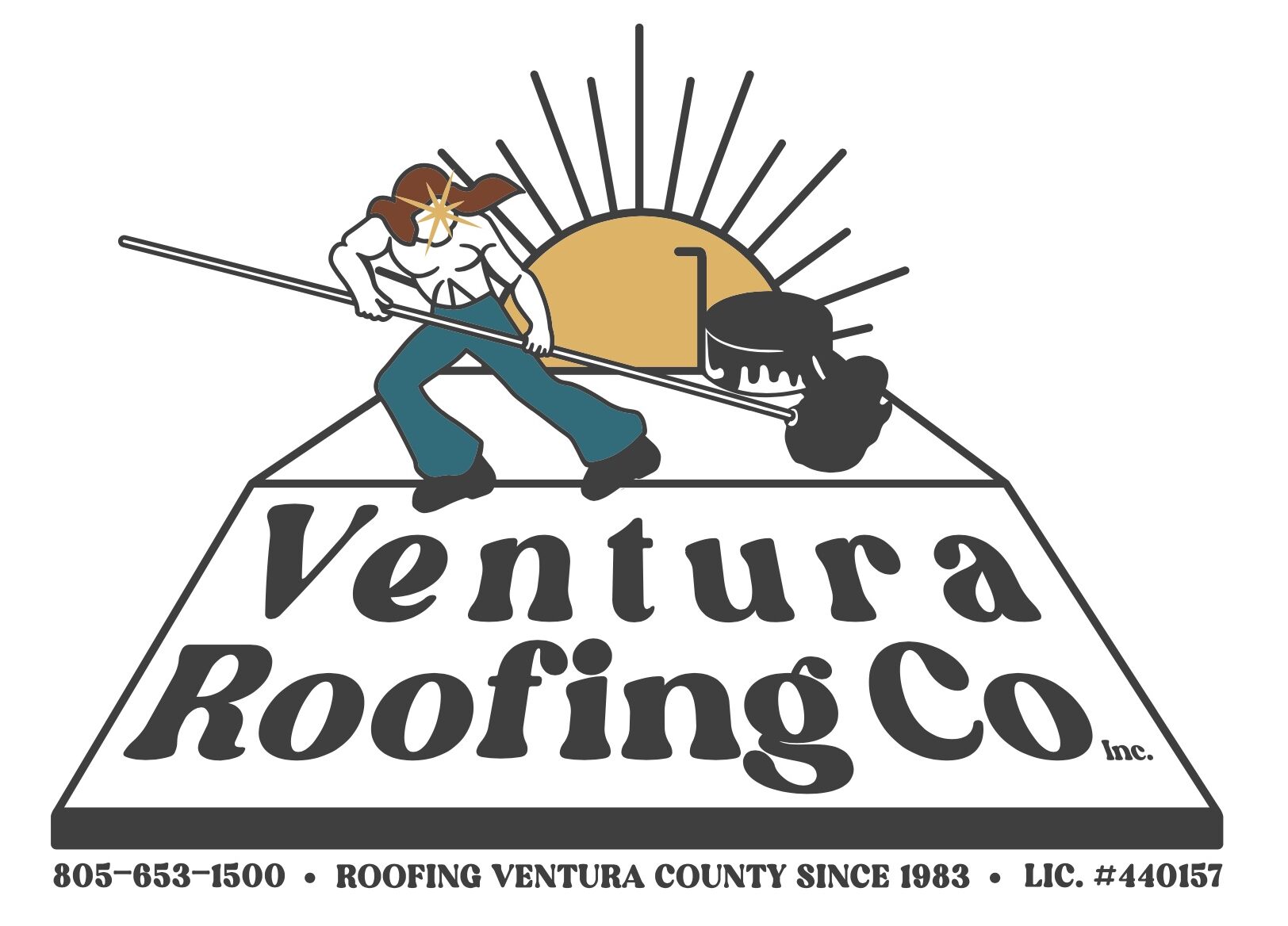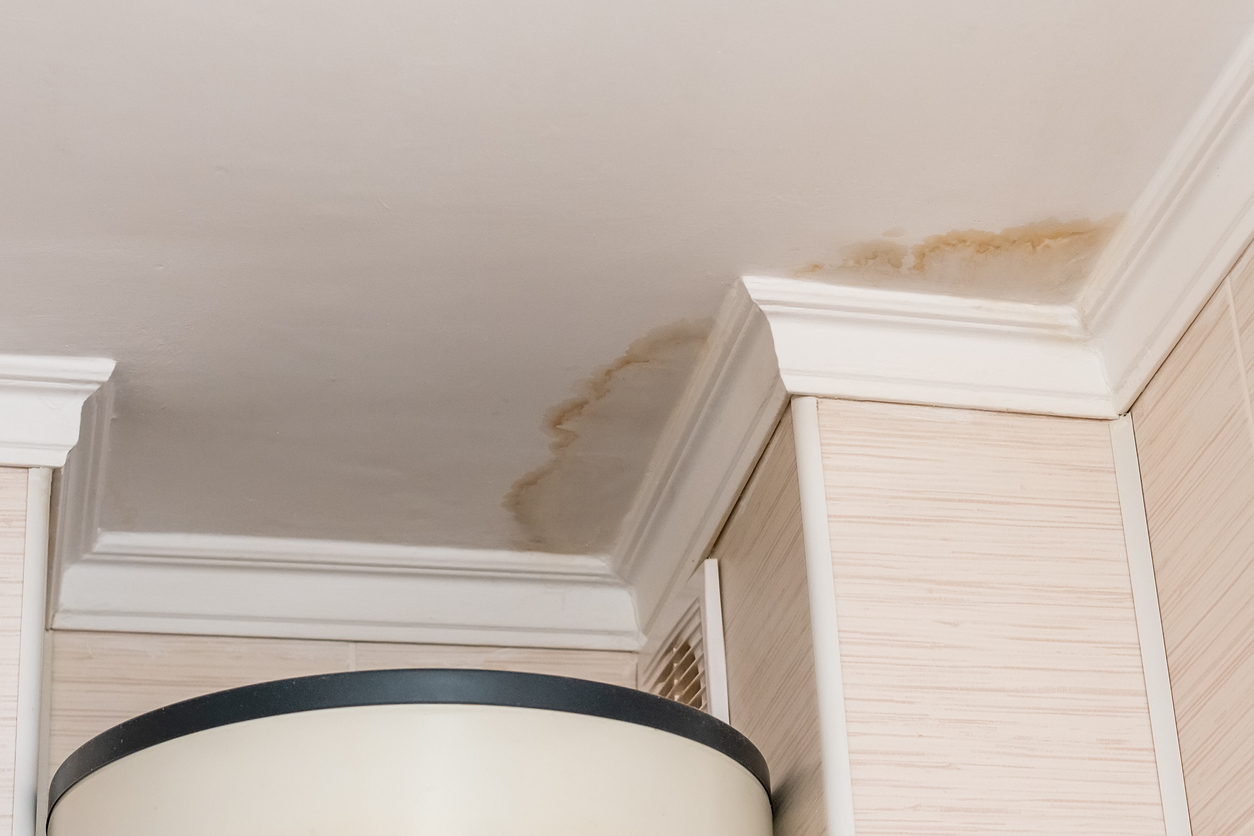Common signs of a leaking roof include water stains on ceilings and walls, damp insulation in the attic, mold or mildew growth on interior surfaces, missing or damaged shingles, compromised flashing, clogged gutters, visible light through the roof in the attic, peeling paint or wallpaper, standing water on the roof, and unexpectedly high energy bills. Identifying these signs early can prevent further damage.
The recent atmospheric river swept through Ventura County left many homeowners grappling with the aftermath, including identifying and addressing roof leaks.
These leaks can lead to significant damage, undermining the structural integrity of homes and requiring professional roof repair. Recognizing the signs early is crucial in mitigating these risks.
This article shares ten signs of a leaking roof and what homeowners should do next.
Signs of A Leaking Roof
A leaking roof can manifest in various ways, indicating a potential compromise in your home’s first line of defense against the elements.
From the subtle to the unmistakably obvious, knowing what to look for can save you time and money in the long run.
Here are 10 signs of a leaking roof and what homeowners should do next.
Water Stains on the Ceiling or Walls
Water stains on ceilings or walls are often the most visible indicators of a roof leak.
These stains may appear as discolored patches ranging from yellow to brown, signaling that water has infiltrated your home. These stains can often be traced back to a compromised roof where water seeps through cracks or gaps, eventually reaching your interior spaces. It’s important not to ignore these signs, as they can lead to further structural damage, including weakened drywall or plaster.
Early detection and repair of the source of the leak can prevent more extensive and costly repairs later on.
Damp or Wet Insulation in the Attic
Finding damp insulation in your attic is a clear sign that water is leaking through your roof.
This condition not only reduces the effectiveness of your insulation, leading to higher energy costs, but it can also create a breeding ground for mold and mildew.
Wet insulation cannot perform its role in regulating your home’s temperature, resulting in increased heating and cooling expenses.
Addressing this issue promptly by identifying and repairing the roof leak will protect the structural integrity of your home and maintain the efficiency of your attic’s insulation.
Mold or Mildew Growth on Interior Ceilings and Walls
Mold or mildew growth inside your home, particularly on ceilings and walls, indicates excess moisture and potential roof leaks.
These fungi thrive in damp environments and can spread quickly, posing health risks to residents by affecting air quality. The appearance of mold or mildew often indicates that water has penetrated the building’s envelope, requiring immediate attention to identify and remedy the source of moisture.
Early intervention can prevent the spread of mold and protect your home from further damage, ensuring a healthier living environment.
Missing, Damaged, or Slipping Shingles
Shingles serve as the outermost barrier protecting your home from the elements. When they are missing, damaged, or have slipped out of place, it compromises your roof’s ability to prevent water entry.
Such damage can result from severe weather conditions, age, or physical impact. Missing or damaged shingles expose the underlying roof materials to water, leading to leaks into the attic and living spaces below.
Regular inspections, especially after extreme weather, can help detect these issues early, allowing for timely repairs to maintain your roof’s integrity and water resistance.
Damaged or Missing Flashing
Flashing is a critical component of your roof system, designed to seal and protect the most vulnerable areas of your roof, such as around chimneys, vents, and where the roof meets a vertical surface.
When flashing is damaged or missing, it creates openings that allow water to penetrate the roof, leading to leaks. Damage can occur from corrosion, physical impact, or improper installation.
Regularly checking these areas and promptly addressing any issues can prevent water from infiltrating these weak points, safeguarding your home against potential water damage and costly repairs.
Clogged or Damaged Gutters and Downspouts
Clogged or damaged gutters and downspouts are critical signs of a leaking roof, as they play a pivotal role in directing water away from your home’s foundation and exterior walls.
Water cannot flow freely when gutters are obstructed with debris, such as leaves and twigs, or when downspouts are damaged. This leads to overflow, which can back up under your roof shingles or seep into your home’s siding and foundation, causing leaks and water damage.
Regular cleaning and maintenance of gutters and downspouts are essential to ensure water is efficiently channeled away from your home, preventing leaks and protecting the structural integrity of your property.
Visible Light Through the Roof in the Attic
One unmistakable sign of a leaking roof is visible light through the roof when you’re in the attic. This indicates there are holes or cracks in the roofing material, which not only allow light to enter but also water.
Various factors, including weather damage, age, or physical impact, can cause these openings. If light can get through, so can water; addressing these vulnerabilities immediately is essential.
Prompt repair of these issues can prevent water from causing extensive damage to your insulation, attic, and interior ceilings, safeguarding your home from the potential hazards of water intrusion.
Peeling Paint or Wallpaper Inside the Home
Peeling paint or wallpaper inside your home can often be a sign of a leaking roof, indicating that moisture has penetrated the walls.
This symptom suggests that water is entering and becoming trapped within wall cavities or the surface layer, leading to deterioration of the paint or wallpaper adhesive. Excess moisture can result from inadequate ventilation or direct leaks from the roof into the building envelope.
Addressing the root cause of the moisture, often by repairing the roof leak, is crucial to preventing further cosmetic and structural damage to your home.
Standing Water on the Roof
Standing water on the roof is a significant sign of a leaking roof, particularly in flat or low-slope roofing systems where poor drainage can cause water to pool.
This condition can increase pressure on the roof structure, promoting leaks and potentially damaging the roof material. The causes of standing water include clogged drainage systems, inadequate roof slopes, or structural issues.
It’s essential to eliminate the causes of pooling water through proper maintenance, including ensuring gutters and roof drains are clear and functional to prevent water from seeping through the roof and causing interior damage.
Increased Energy Bills
An unexpected increase in energy bills can be a subtle sign of a leaking roof, as it may indicate that water has compromised your attic insulation.
Wet insulation loses its effectiveness, leading to heat loss in the winter and heat gain in the summer. This forces your heating, ventilation, and air conditioning (HVAC) system to work harder to maintain comfortable indoor temperatures, resulting in higher energy consumption.
Identifying and repairing roof leaks can help restore the efficiency of your insulation and reduce your energy bills, making it a critical step in managing your home’s energy costs effectively.
Professional Roof Repair
When facing signs of a leaking roof, turning to professionals like Ventura Roofing Co. in Ojai, California, is your best bet.
With years of experience, state-of-the-art technology, and a commitment to customer satisfaction, Ventura Roofing Co. specializes in identifying leaks and providing expert roof repair services with precision and efficiency.
Don’t let a slight leak become a significant problem – contact Ventura Roofing Co. today to secure your home against the elements.
Conclusion
Identifying the signs of a leaking roof early can save homeowners in Ventura County and beyond from extensive damage and repairs.
By looking for these ten indicators and acting swiftly, you can protect your home and peace of mind.
If you suspect a leak, don’t hesitate to contact Ventura Roofing Co in Ojai, California, for professional assessment and repair. Secure your home against the rain; your roof is your first defense.

